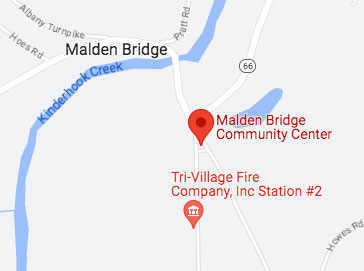
Henry Knox was born in Boston, MA on July 25, 1750 to William Knox and Mary (Campbell) Knox, immigrants from Scotland. His Father was a ship builder who left for the West Indies and who perished there of unknown causes.
Henry at age 9 was the eldest son and was attending Boston Latin School studying Greek, Latin, European History and arithmetic when his father died. He had to leave school and go to work to support the family. He became a clerk in a bookstore owned by Nicholas Bowes. Mr. Bowes became a surrogate Father to young Henry Knox and encouraged him to take home any books he would like to read. Young Knox was inquisitive and, when not working, he taught himself French and advanced mathematics. Henry avidly enjoyed the study and history of ancient warriors and battles.
Young Henry Knox, while scholarly within his job and at home also involved himself in Boston Street gangs and was known for his toughness in a street fight. He was a witness to the Boston Massacre of March 5, 1770. According to an affidavit he said he had tried to convince the soldiers to return to their barracks. He also testified in trials on behalf of some of the soldiers, getting acquittals for many.
In 1771, at the age of 21 he opened his own bookstore in Boston which became the preferred shop for aristocrats of the time. He developed strong relationships with his British suppliers as well as his customers. On the political front in 1772 Knox co-founded the Boston Grenadier Corps and served as its second in command. In that role at the age of 23, he accidentally discharged a firearm, resulting in the loss of two fingers. He bound the wound and found a Doctor who sewed the wound up. Considering the times and the treatments available it is a wonder this wound did not lead to further limb loss or even sepsis!
Henry was a supporter of the Sons of Liberty who stood against the tyrannical polices and rules being dictated by the British Parliament. The Boston Port Act passed by British Parliament March 31, 1774 closed the port of Boston to all commerce until the city paid for all the tea destroyed at the Boston Tea Party. It is unclear if Henry Knox took part in the Boston Tea Party although he most assuredly was aware of the event as it unfolded. Between the Port Act and the loss of customers who shunned purchases of anything imported from Britain, Henry Knox’s bookstore began to face financial hardship.
While operating his bookstore prior to the Boston Port Act, Henry Knox met Lucy Flucker, the then 16 year old daughter of Boston Loyalists. Lucy and Henry flirted for some time in a courtship forbidden by Lucy’s parents. On June 16, 1774, when Lucy was 18, she and Henry secretly married. Upon discovering the marriage, Lucy’s parents disowned her for marrying a “low Born” man.
_____________________________________________________________________________________
After the battles of Lexington and Concord, British troops retreated to Boston where they considered themselves safe. American militiamen surrounded the city effectively containing the British and cutting off supplies. As this was transpiring, the British offered Henry to join their Troops. When he refused their offer, they threatened to arrest him! Lucy sewed weapons into the lining of Henry’s coat and they fled Boston. Henry Knox’ now abandoned bookstore was looted and all of its stock destroyed.
At the start of the Seige of Boston on April 19, 1775, Henry joined the Militia under General Artemis Ward leaving Lucy alone in Worcester, which location Henry thought safer than Cambridge. During this time the Continental Army was formed. While the siege was ongoing the British planned to send troops out to the unoccupied hills surrounding Boston so to give them control over Boston Harbor. In response, 1200 Continental Troops under William Prescott occupied Bunker Hill and Breeds Hill constructing a redoubt on Breeds Hill as well as fortified lines across Charlestown Peninsula.
The British became aware of the presence of Continental forces on the peninsula and on June 17, 1775 in the famous Battle of Bunker Hill, mounted an attack against them. It took three assaults on the redoubt, with severe British casualties before the British succeeded. The redoubt was finally captured only because the Continental army ran out of ammunition and were then forced to retreat over Bunker Hill leaving the British in control of the peninsula. Henry Knox directed the cannon fire at the battle of Bunker Hill.
While the Battle of Bunker Hill was a tactical Victory for the British, it also was sobering as they sustained more casualties than the Americans. This battle caused the British to be more cautious in their ambitions to take on the Colonists and the Continental Army in future engagements. On July 3, 1775 after the Battle of Bunker Hill, George Washington took control of the war effort and the Continental Army.
General Washington was impressed by the work of Henry Knox and the two had regular contact along with other generals as the Continental Army was being formed. Knox did not have a commission in the army but John Adams, working with the Second Continental Congress got Henry Knox a commission as Colonel of the army’s artillery regiment. Knox also petitioned his own case quite convincingly by letting Adams know that Reichard Gridley, the older leader of the artillery was intensely disliked by the men and in poor health.
As the siege of Boston wore on after the American defeat at Bunker Hill the idea formed that cannons recently captured at Fort Ticonderoga and Crown Point would surely help to sway the outcome of the Siege of Boston in the favor of Washington’s army. Knox was the one who presented this idea to General Washington and, even though Knox’s commission had not yet arrived, General Washington put him in charge of this expedition.
Colonel Knox arrived in Fort Ticonderoga on December 5, 1775. He commenced what became known as the Noble Train of Artillery. The Task was to move 60 tons of cannon (approximately 58 in number) and other armaments by horse drawn and oxen drawn sledges and carts over 300 miles in the snow, ice and bitter cold; across rivers and across the Berkshire mountains to the siege camps around Boston. Colonel Knox ambitiously planned for this endeavor to take two weeks.
The area around Ticonderoga was sparsely populated and he had trouble getting sufficient people and draft animals to assemble and begin the trek. The mountains were a rugged obstacle as were the rivers to be crossed. Cannons crashed through river ice on several occasions but were always recovered. Other obstacles to Colonel Knox’ timeline was the variable winter temperatures. At times it would be cold and river ice would freeze, allowing easier transport. At other times the temperature would rise, making ice less solid along with roads. In correspondence to General Washington, Colonel Knox mentioned a lack of snow cover such that the sleds could not be utilized slowing their progress.
The Knox Cannon Trail or the Noble Train of Artillery started at Fort Ticonderoga and worked its way south to Albany. Upon reaching Albany they followed the wagon trails east to Boston.
The Trail south from Ticonderoga went along Lake George to Sabbath Day Point, Bolton Landing through what is now the Village of Lake George then continued South through Schuylerville and what would later be the Saratoga Battlefield. They crossed the upper Hudson four times. Just south and west of Half Moon the Noble Train was tasked with crossing the Mohawk River. Due to fluctuations in temperature the river crossings were impeded, and they were delayed waiting for ice to thicken. At Albany, as they were crossing the Hudson, a large cannon fell through the ice. Citizens from Albany came out and with great effort the cannon was recovered.
After the near disaster of crossing the Hudson, Colonel Knox headed south passing through Kinderhook, a portion of the Town of and Ghent and then proceeded east through Hillsdale. A Knox Trail Marker is located on the Taconic State Parkway, east side, at the Harlemville Road crossing.
From Hillsdale they continued east into the Berkshires approximately following today’s US Route 20. In Massachusetts the entourage passed through Great Barrington, Blandford, Westfield and then faced the Connecticut River.
Coming to the Connecticut river, the steep descent to its crossing coupled with the lack of snow and insufficient numbers of draft animals discouraged Colonel Knox original crew and they became less inclined to continue the journey. Here history diverges. Some say that the original crew became so discouraged that Colonel Knox was forced to replace them. Other sources say he brought on more Oxen and persuaded the original crew to stay on. The truth likely resides somewhere in the middle with some of the crew quitting and returning home and new members coming on while the Colonel obtained more draft animals to help with the descent.
After crossing the Connecticut at Springfield, they continued through Worcester, Marlborough, Framingham, and Waltham, and on January 27, 1776 arriving at Cambridge 56 days after starting out from Fort Ticonderoga.
The cannons were immediately deployed to the recently captured Dorchester Heights. Their placement, under the command of Colonel Knox, were so commanding the British, under Howe, withdrew to Halifax.
The Siege of Boston ended on March 17, 1776, due in large part to the successful mission Colonel Knox incepted, and as accepted by General George Washington.
________________________________________________________________________________________
Lucy never saw her parents again when the British fled Boston. She and Henry were devoted to each other for their lives. They had 13 children but only 3 survived to adulthood. Lucy Knox was a supporter of the Continental Troops and a heroic woman in her own right. She was very active in the war effort joining with other wives supporting troops at the Valley Forge military encampments. She had regular contact with Martha Washington.
Henry Knox went on to become General Knox. He was instrumental in planning the famous crossing of the Delaware as well as in supplying troops at Valley Forge.
At the end of the war, General Knox initiated the concept of the Society of the Cincinnati authoring its founding document and establishing the organization as a fraternal and hereditary society of veteran officers that survives to this day.
In 1785 the Congress of the Confederation appointed Knox as secretary of War. Upon adoption of the US Constitution, he became President Washington’s Secretary of War and his administration was almost entirely involved in Indian Affairs. Fort Knox in Northern Kentucky was named after Henry Knox, the first Secretary of War.
General Knox retired in 1795 to Thomaston, District of Maine where he and Lucy settled on the Waldo Patent. Since her family had fled and returned to England, Lucy was heir to this 576,000 acre tract as the only surviving American citizen and offspring of Brigadier General Samual Waldo, Lucy Knox’s maternal Grandfather. General Knox built a large home in Thomaston while overseeing many business ventures. In 1806 he perished from peritonitis just as his ventures were gaining traction and his finances were improving. Lucy outlived her husband by 18 years.
Today 56 Markers mark the Knox Trail Journey starting at Crown Point and Fort Ticonderoga and ending at Dorchester Heights in Massachusetts.
The markers in Columbia County are as follows:
Kinderhook; 1 Hudson St., Kinderhook, NY 12106 at intersection with Albany Ave.
Ghent; 6 Snyder Road, Ghent, NY 12075 at corner of Rt 66 in yard
Ghent; 1202 Harlemville Road, Ghent, NY 1207 at the northbound intersection with the Taconic Parkway
Hillsdale; 40 Nobletown Road, Hillsdale, NY 12529 at the intersection of Rt 22 and Rt 71
Hillsdale


